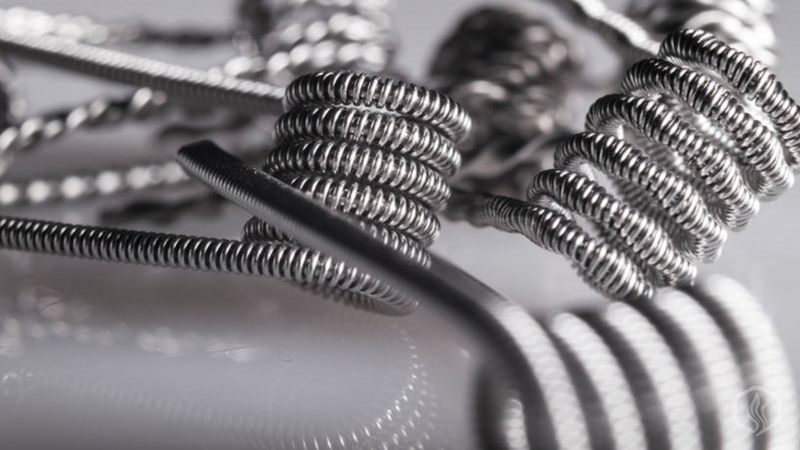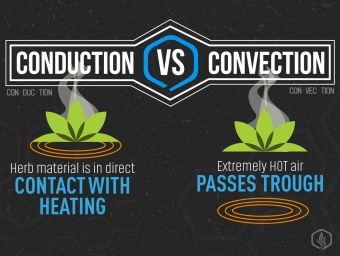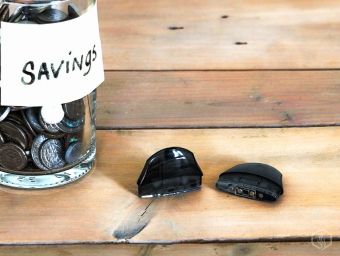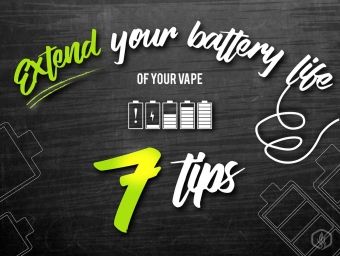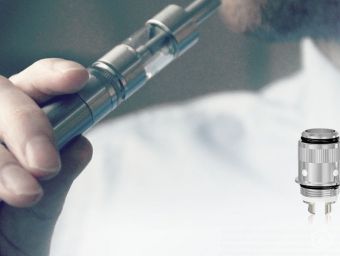Whether we’re talking about stock atomizers or DIY, the materials they are built from are the same. Inside the RDA you will commonly find a coil stuffed with, or surrounded by organic cotton. The coil is essentially a piece of wire which was wrapped around a cylindrical rod. Depending on its thickness, physical properties and the number of loops this has a specific resistance, measured in Ohms. There are five main types of vape wires:

Kanthal
Kanthal or iron-chromium-aluminium (FeCrAl) is the most commonly used in vaping. With a melting point of 1,500 degrees Celsius this makes the perfect heating element inside our atomizers. It’s fairly durable, easy to work with and the resistance is predictable using online calculators or phone apps. It’s also inexpensive and widely available. We recommend it to all beginners.

TIP: Make sure to use Kanthal wire only when your device is in power mode. This includes variable wattage, variable voltage, bypass and mechanical mods. You cannot use Kanthal coils in Temperature Control mode.
Nickel
Nickel or Ni200 is one of the first types of wire to be used with temperature control. Most of the regulated mods out there have a TC mode for Nickel. However, you will mostly find it inside stock coils. This is because the material can be tricky to work with and can be dangerous when used the wrong way. Nickel coils usually have a very low resistance and are mainly intended for sub ohm vaping and direct lung draws.
SAFETY TIP: Never use Nickel coils in power mode. These coils should be used in temperature control mode only. It’s also a material which is known to trigger allergies.
Titanium
Titanium, just like Nickel it’s one of the first wires to be used with temperature control. You will mostly find it inside stock atomizers and this is because there is a lot of controversy surrounding the material. At temperatures of over 1,200 degrees Celsius it releases a toxic compound called Titanium Dioxide. This is why it’s not commonly used in DIY coil builds and it’s only suitable for TC.
SAFETY TIP: Use Titanium coils only in temperature control mode. This prevents them from overheating and releasing any potentially dangerous fumes.
Nichrome
Nichrome or Ni80 behaves very much like Kanthal and has been used since the early beginnings. It’s easy to work with and has faster ramp up times. This material however has a lower melting point so it’s not that suitable for dry burning. Also, Nichrome coils tend to burn out faster than their Kanthal counterparts. However, many vapers believe this gives a much cleaner flavor.
TIP: Nichrome coils are only intended to be used in power mode.

Stainless Steel
Stainless Steel is by far the most versatile wire used in vaping. We started using it just a couple of years ago but its popularity skyrocketed. This is because it’s the only material that can be used in VW mode as well as TC. It doesn’t release any hazardous byproducts and the flavor is just perfect. There are several SS alloys out there but we prefer SS316L. This is also used in the medical, food and pharmaceutical industries.
Gauges and properties
All these vape wires come in 10m spools and are generally grouped by gauge or diameter. When building coils we usually use gauges 22, 24, 26, 28, 30, and 32. The higher the gauge, the higher the resistance. At the same time the higher the gauge the lower the diameter. This means AWG32 is the thinnest and AWG22 is the thickest. AWG32 has the highest resistance and AWG22 the lowest. Low resistances account for big ramp-up times.
Complex coils like Claptons are made from two or more pieces of wire. These usually have different gauges and can also be different materials. Clapton coils have lower resistances and big ramp up times. At the same time since there’s more surface area they deliver more vapor and flavor.

TIP: We recommend AWG32 for beginners. This is easy to work with and gives some of the most commonly used resistances.


